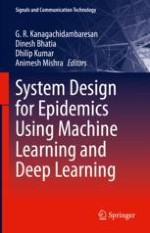Abstract
The large-scale outbreaks of infectious pandemic diseases emerged regularly throughout history and created notable economic, social, and political disruptions. Major pandemics affect a wide geographic area significantly increasing morbidity and mortality. The world has come across numerous remarkable pandemics such as the Black Death, measles, smallpox, influenza, plague, cholera, Spanish flu, severe acute respiratory syndrome coronavirus (SARS-CoV), Middle East respiratory syndrome coronavirus (MERS-CoV), human immunodeficiency virus/acquired immunodeficiency syndrome (HIV/AIDS) and Ebola virus and is now combating the new coronavirus disease 2019 (COVID-19) pandemic affecting humanity greatly. Studies suggest that the likelihood of pandemic threats is due to the diversity of pathogens, changes in the dynamics of disease transmission and severity, human-pathogen interaction, increased globalization, urbanization, huge exploitation of land and natural resources, and global warming.
The pandemic risk burden poses serious challenges to humanity and these trends will prolong and intensify over time. For the well-being of humanity, administration of public health measures, techniques to intercept and control infection, pharmaceutical intervention, global surveillance programs, novel technologies to identify disease biomarkers, and vaccine production prove to be effective beneficiary responses to identify and limit emerging outbreaks and to escalate preparedness and health capacity. The extensive amount of data produced during the pandemic has given a lot of chances to the researchers and healthcare providers to evaluate new trends, detect vulnerable groups, and solve long-standing issues in the healthcare industry. The healthcare industry has sought to use the most comprehensive data and predictive analytics software tools employing intelligent data technology, artificial intelligence (AI), machine learning (ML), and deep learning (DL) and has leveraged to gain insight, establish innovative ways to ease sustainable demand and supply, and pitch straight into the prospective benefits to foster the fight against the pandemic.
Hence, these predictive models can support hospitals, healthcare settings, state health organizations, and government establishments to speculate the influence of COVID-19 and prepare for the future. In this chapter, a comprehensive investigation of various data analytic tools that are used in expert systems, proposed for pandemic and epidemic diseases, is discussed. The key issues, challenges, and opportunities of the existing and current methods are also discussed.
